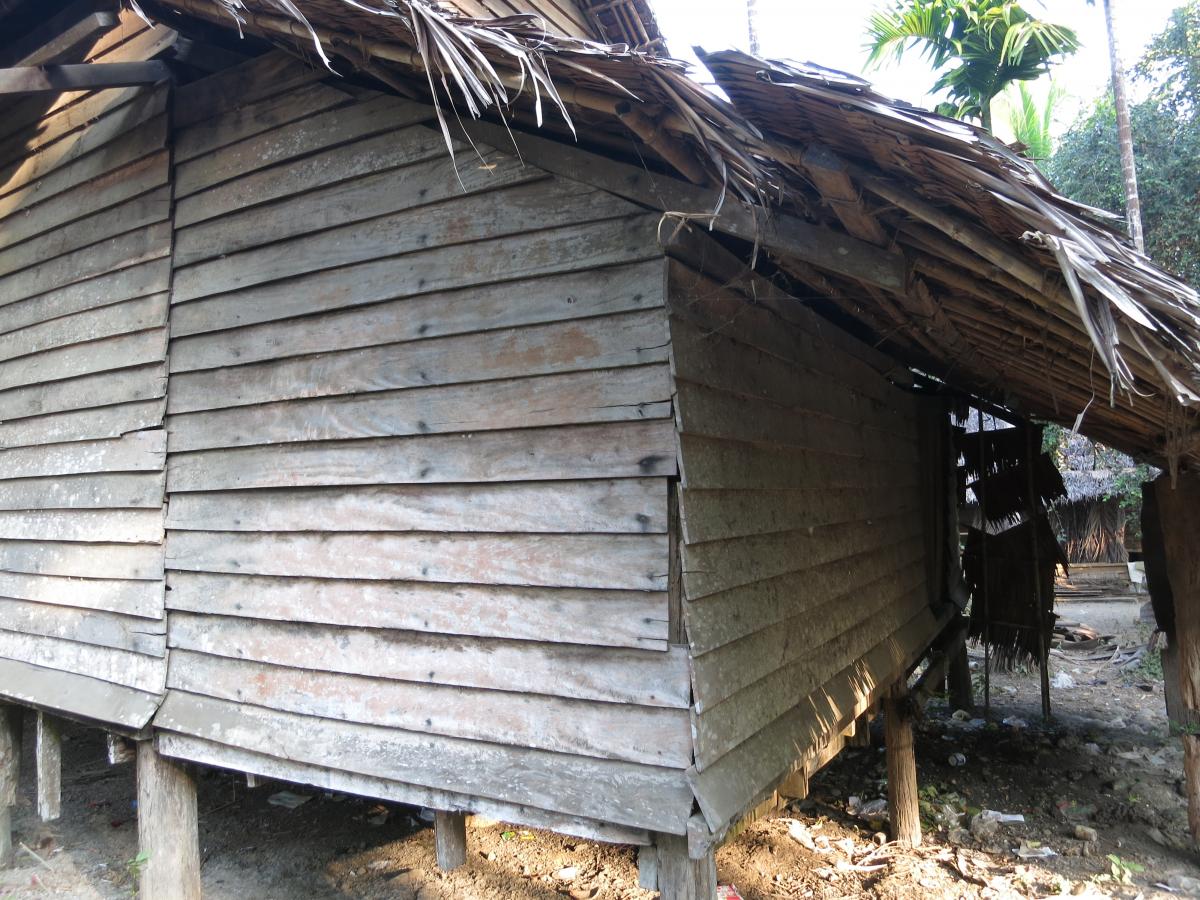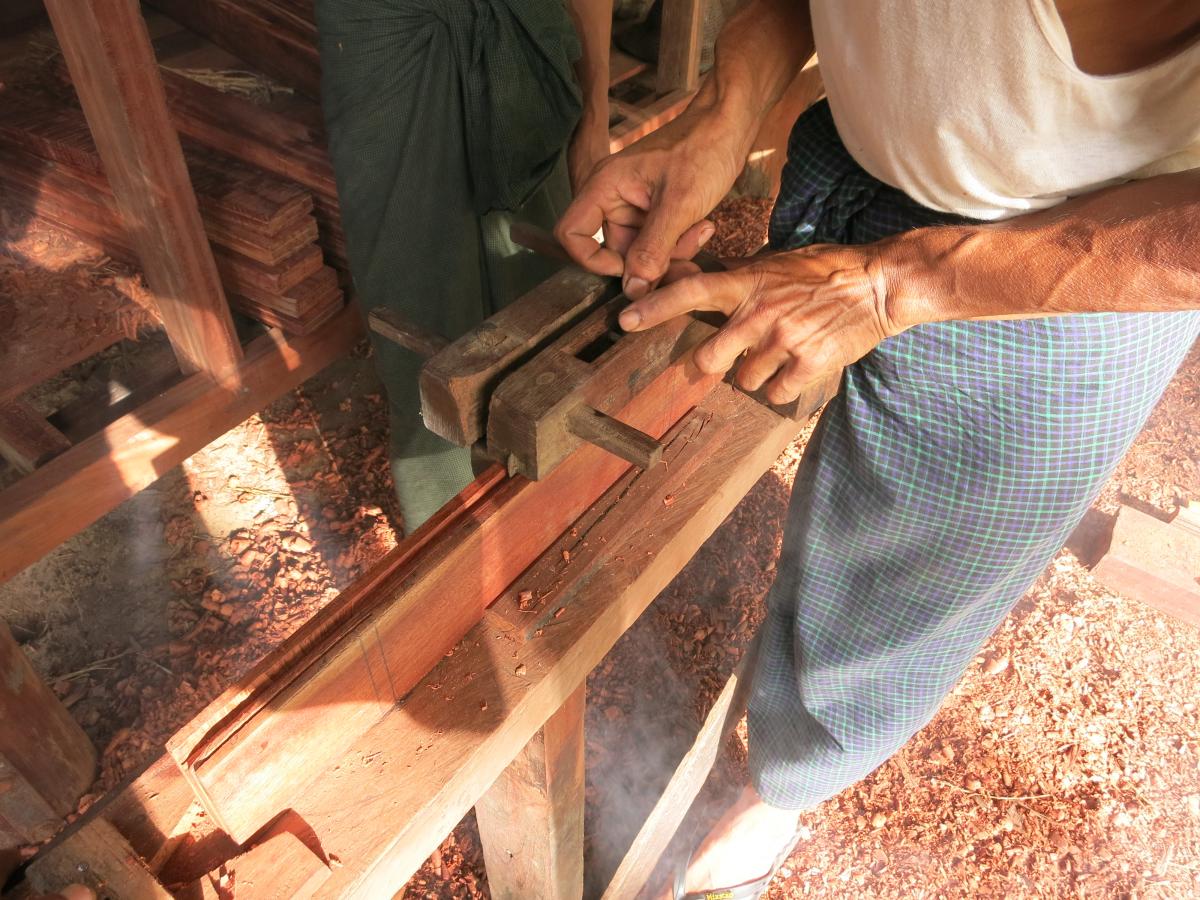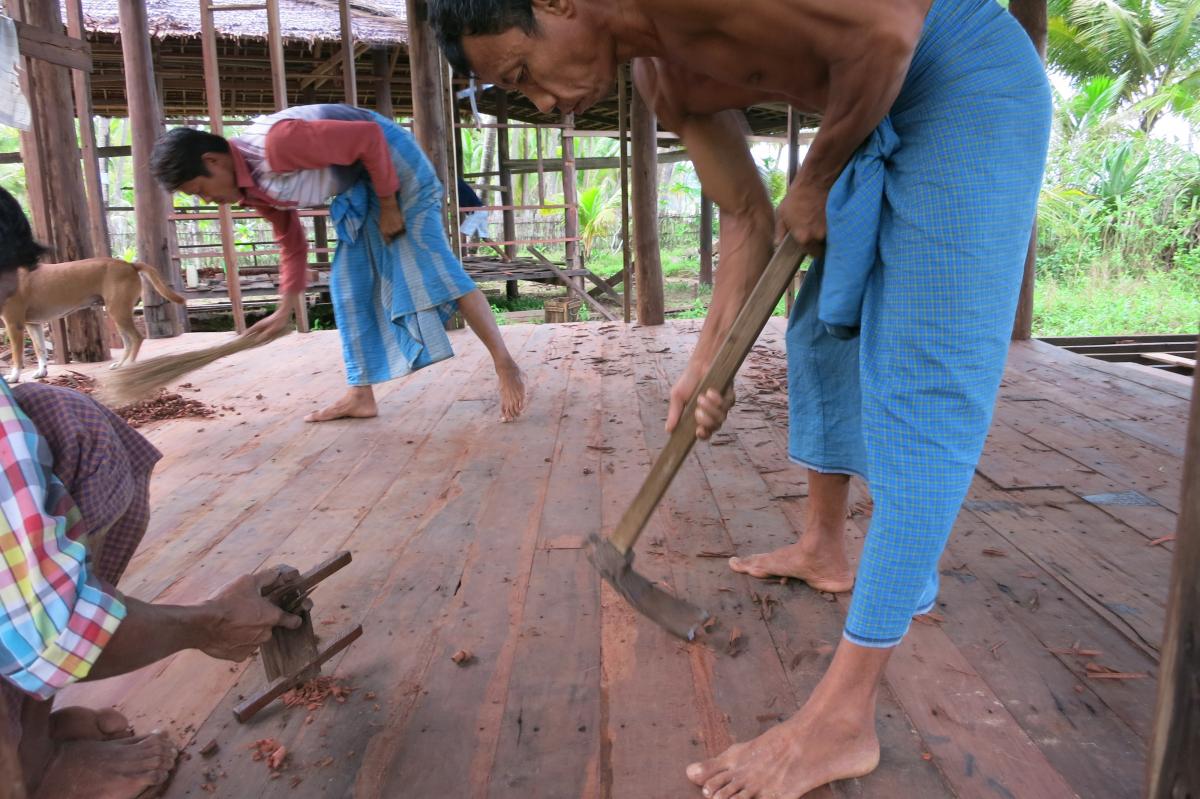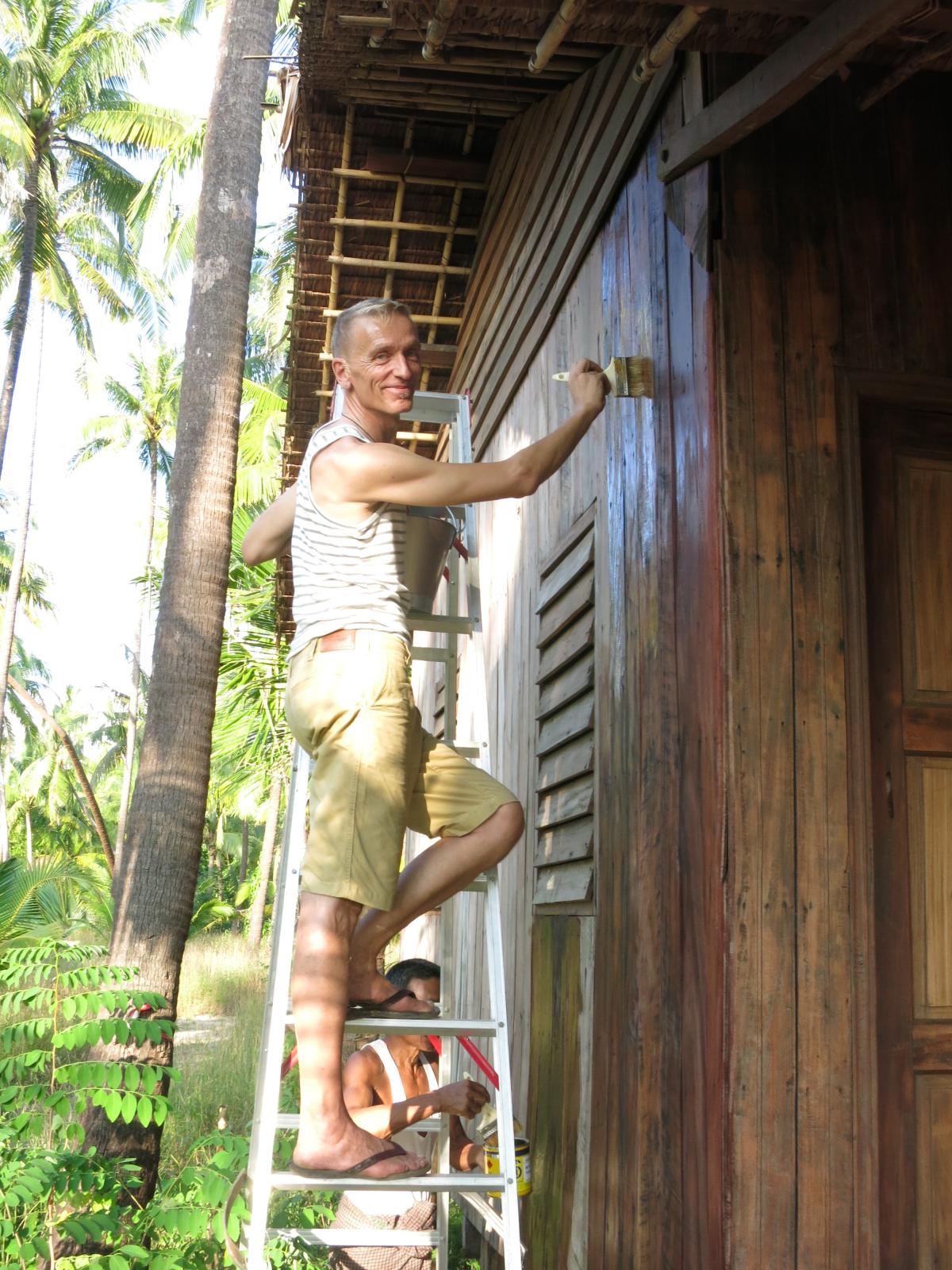It is the hardest wood found around here. It won't even float on water! In building their stout houses, every Rakhine who can afford it builds his house in solid ironwood - from main poles to walling and flooring. Usually they then coat the outside facing walls with a layer of Ye Nan Ji, a thickened paste derived from crude oil that is mixed with diesel when applied. The houses exterior walls then look a rather dark blackish brown. As the house goes through one rainy season after another, the wood changes colour to a silver greyish black. Here is a typical look of an old house we bought for our construction
Hard to imagine anything beautiful could still be built from this, isn't it?When the house is then carefully taken apart, a first portion of damaged wood is singled out. The good part of house wood is moved to our project site, where it undergoes hand-made renovation.
Manual restoration
The most important manual tools of our carpenters are the Ye Bon - wood plane, with which they scrape the topmost layer of the wood away. Once boards are laid out for flooring, uneven parts are also manually chipped off. I really don't know what to call this technique as I have never seen it done elsewhere. It is like the carpenter is working in the garden, digging a hole. Instead he skilfully chips out all unevenness.
Finally an old piece of ironwood reveals incredible beauty of colour, intense reddish brown-black shades, exhibiting a shiny, totally smooth finish and feel.
During our first building phase we learnt that on average, 75% of an old house's wood could be restored and reused. Around one quarter of the house turns out to be waste wood used for cooking or set aside for doing very small carpentry jobs later on.
Outer finish
After some long research and lots of hesitation we decided against the local crude oil concentrate-diesel mix for an outside protective paint. Instead we use so-called teak oil. It is made in Singapore and we can easily buy it in Yangon. It consists of triglycerides and drying oils, similar to the cooked, "drying" linseed oil used in Europe to naturally protect wood or to oil-care varnished shutters in traditional houses once a year.Isn't it amazing how lovely our bungalow wood looks?
The process of renovating these tons of wood produces bags upon bags of wood chippings and sawdust. We save and keep them for use as the main ingredient of our composting toilet "flush-cover" mix and for starting our cooking fires. So even this waste does not go to waste after all.
My next blog's focus on sustainable building materials will touch on bamboo.













